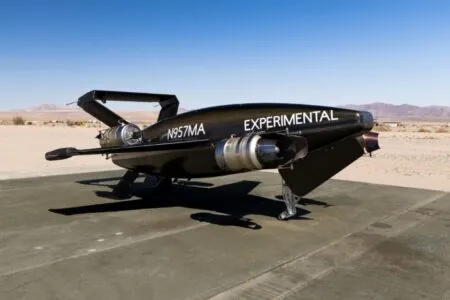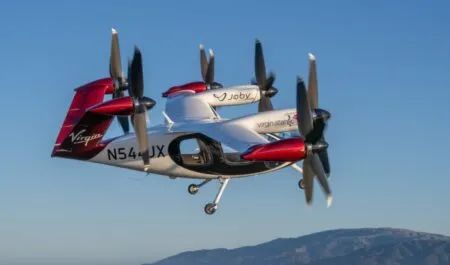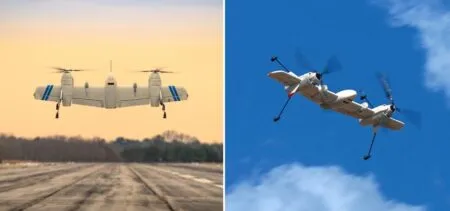Researchers from NASA’s Armstrong Flight Research Center at Edwards Air Force Base, California, and Area-I Inc, of Kennesaw, Georgia, USA have successfully conducted the maiden flight of a remotely piloted test bed for cutting edge aviation and space technologies.
The Prototype-Technology Evaluation and Research Aircraft (PTERA) is a versatile flying laboratory bridging the gap between wind-tunnel experiments and crewed flight-testing. All first flight test objectives were successfully completed.
The maiden flight of Armstrong’s PTERA followed two weeks of training and ground testing. The aircraft was flown under radio control as well as under the control of a Cloud Cap Piccolo autopilot. A maximum speed of 145knots was obtained making this the fastest PTERA flight to date. Intensive post-flight inspections of the aircraft revealed no problems.
The ability to alter PTERA’s configuration allows cost-effective testing of unconventional designs that might otherwise be too dangerous or expensive to test with a full-scale, crewed aircraft. PTERA’s capabilities make it a perfect platform to support aeronautics and space research within NASA, defense, industry, and academia.
PTERA-BL aircraft are configured to resemble an 11%-scale Boeing 737 with a wingspan of 11.3-feet (3.4m) and 200-pound (91kg) gross weight. Powered by two 50-pound-thrust JetCat P200 engines, each PTERA has a semi-modular airframe designed to accommodate a variety of configurations and technologies.
Flight-testing in July 2013 at Heart of Georgia Regional Airport demonstrated basic airworthiness and handling qualities, and validated PTERA’s usefulness as a research test bed to support experiments in aerodynamic efficiency, aeroelasticity, flight controls, vehicle heath management, and acoustics.
Area-I delivered a PTERA to Armstrong in October 2014 and it was flown for the first time on October 22, 2015. Researchers hope to conduct low-cost, low-risk flight evaluations of shape-memory alloys to control aircraft configuration, and possibly parabolic autonomous flight profiles for microgravity payloads such as Cubesats.




